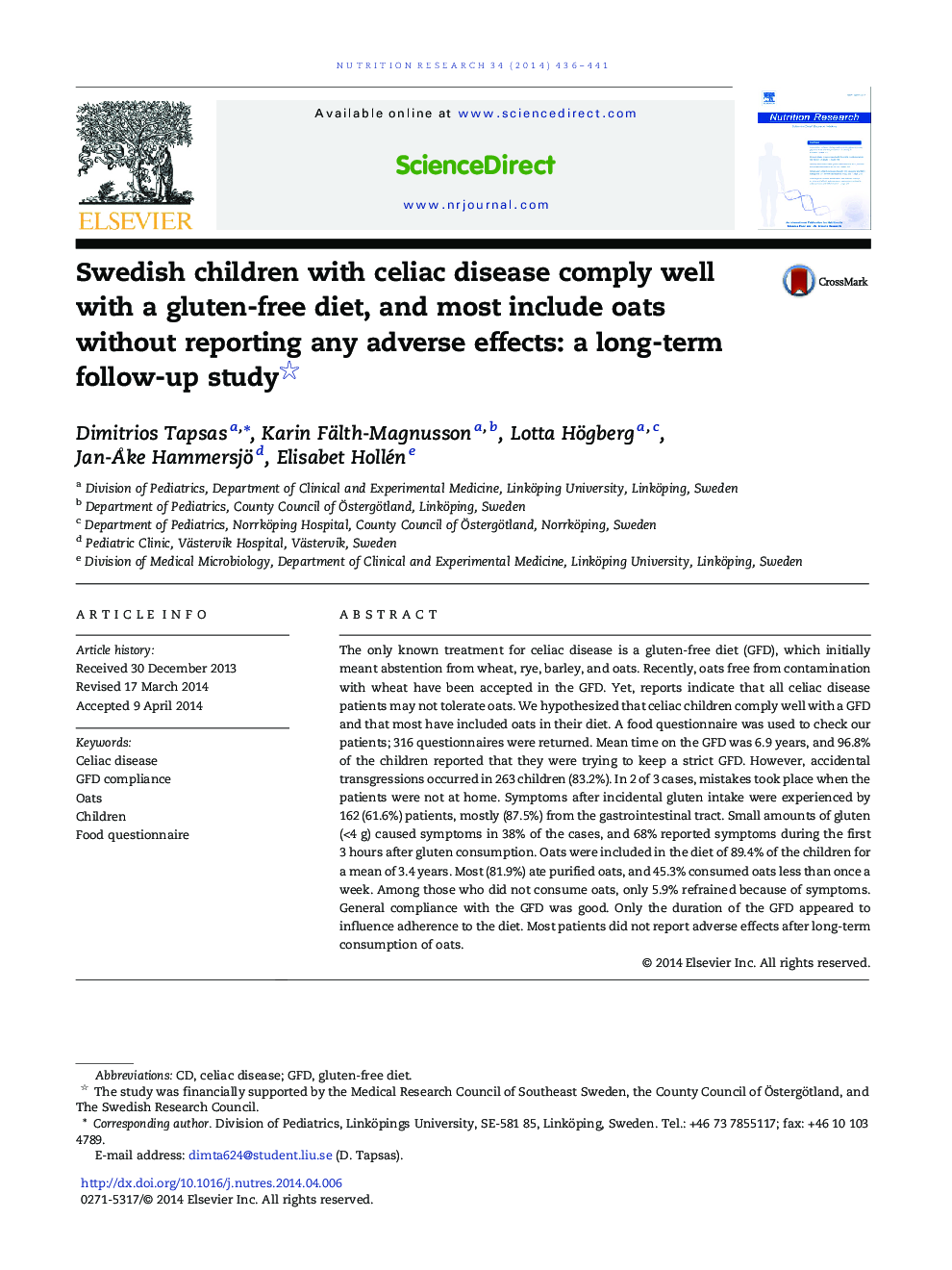| Article ID | Journal | Published Year | Pages | File Type |
|---|---|---|---|---|
| 2809156 | Nutrition Research | 2014 | 6 Pages |
The only known treatment for celiac disease is a gluten-free diet (GFD), which initially meant abstention from wheat, rye, barley, and oats. Recently, oats free from contamination with wheat have been accepted in the GFD. Yet, reports indicate that all celiac disease patients may not tolerate oats. We hypothesized that celiac children comply well with a GFD and that most have included oats in their diet. A food questionnaire was used to check our patients; 316 questionnaires were returned. Mean time on the GFD was 6.9 years, and 96.8% of the children reported that they were trying to keep a strict GFD. However, accidental transgressions occurred in 263 children (83.2%). In 2 of 3 cases, mistakes took place when the patients were not at home. Symptoms after incidental gluten intake were experienced by 162 (61.6%) patients, mostly (87.5%) from the gastrointestinal tract. Small amounts of gluten (<4 g) caused symptoms in 38% of the cases, and 68% reported symptoms during the first 3 hours after gluten consumption. Oats were included in the diet of 89.4% of the children for a mean of 3.4 years. Most (81.9%) ate purified oats, and 45.3% consumed oats less than once a week. Among those who did not consume oats, only 5.9% refrained because of symptoms. General compliance with the GFD was good. Only the duration of the GFD appeared to influence adherence to the diet. Most patients did not report adverse effects after long-term consumption of oats.
